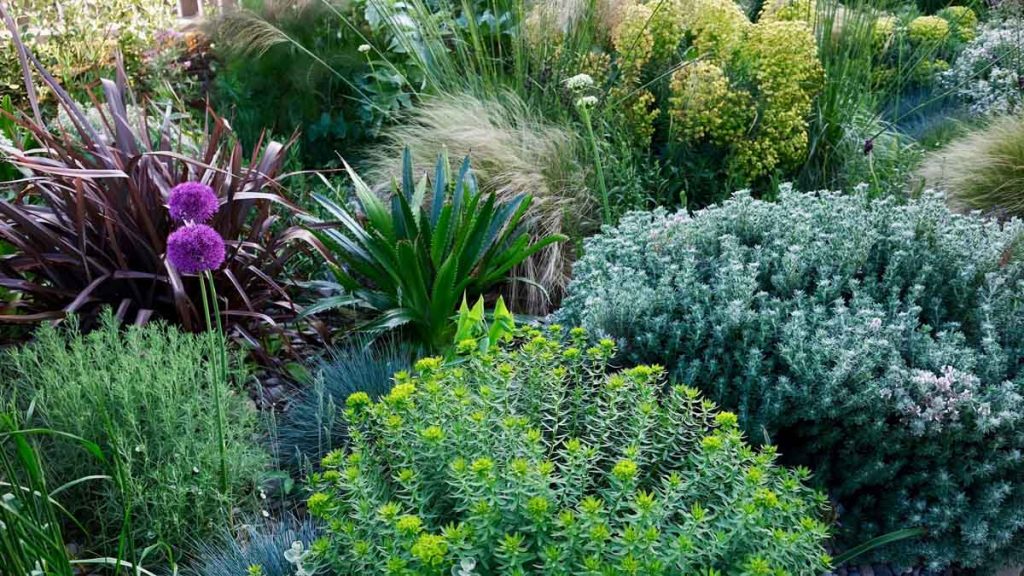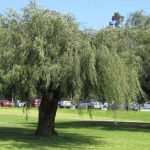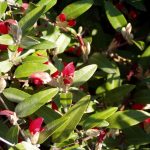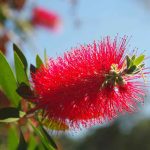 So here is the thing, living in coastal regions has so many perks. For starters, the stunning views and unique lifestyle are not to be underrated. However, it also comes with a particular obstacle: choosing the right plants that can withstand the harsh coastal conditions.
So here is the thing, living in coastal regions has so many perks. For starters, the stunning views and unique lifestyle are not to be underrated. However, it also comes with a particular obstacle: choosing the right plants that can withstand the harsh coastal conditions.
Coastal plants have to deal with several challenges. What are some of these?
Well, there are salt spray, strong winds, and sandy soil just to name a few. The trick to navigating these challenges lies in selecting coastal-friendly plants that provide a more resilient garden and enhance the natural beauty of your coastal surroundings.
How do you go about this? Well, start by understanding the kind of conditions coastal plants usually have to deal with.
What unique conditions do coastal plants face?
To be honest? Quite a few.
Climate Factors
One common occurrence in coastal areas is strong winds. Do you know how strong they can be? Strong enough to physically damage plants and cause dehydration. These winds are usually filled with salt spray and can be really harsh on vegetation.
Salt deposition from sea spray is the major factor affecting the distribution of plant communities in coastal areas. You may be wondering how salt spray works in this context.
Quite simple.
This is how it works: the salt accumulates on leaves. Eventually, this leads to leaf burn, tissue damage, and stunted growth.
Soil Conditions
Another condition that coastal soils have to deal with is their nature. They are typically sandy. This may appear insignificant, but for these plants, it means they drain quickly and don’t retain nutrients well.
What does this fast drainage result in? In the first place, it can lead to nutrient deficiencies. But apart from that, it makes it difficult for roots to establish themselves. We should also stress that the soil in coastal regions may also have a higher salt content. This results in a limited variety of species that can thrive without intervention.
Water Availability
You know what they say about putting water in a basket? Well, while coastal areas often receive adequate rainfall, the sandy soil means that water quickly drains away from plant roots resulting in drought-like conditions. It sounds funny, right? It gets more interesting when we tell you that plants in coastal gardens may require more frequent watering than their inland counterparts.
How do you determine coastal-friendly plants?
Some peculiar features can help you identify the right plants for coastal areas. Here are a few:
- Salt Tolerance: They must have the ability to adapt to salt spray and saline soil conditions.
- Wind Resistance: The best coastal plants have flexible stems and branches that bend rather than break in strong winds. The essence of this is that they can survive through forceful winds without significant damage.
- Drought Tolerance: Seeing as sandy soils tend to drain faster, coastal plants, very importantly, should be able to survive with limited water.
- Adaptability to Poor Soil Conditions: Another identifying trait of coastal plants is that they can thrive in nutrient-poor soils. Some can actually fix nitrogen from the air while others have reasonably efficient nutrient uptake systems.
What are the best trees for coastal regions?
To paint a vivid picture of how important trees are in coastal landscapes, you need to look at their three biggest benefits.
- They provide shade.
- They provide windbreaks.
- They provide a habitat for wildlife.
So, what are some best options to opt for? We have secluded these options into native and non-native choices.
Native Options
1. Coastal Banksia
The coastal banksia is an Australian-native tree. Do you know what is particularly attractive about this tree? It is highly salt-tolerant. It also produces distinctive yellow flower spikes that attract birds and insects.
This tree grows to a height of 4-15 metres and has leathery, dark green leaves with silvery undersides. If you look at the challenges characteristic of coastal regions we highlighted earlier, you’ll come to appreciate this tree even more. It is an excellent choice for sand soils and can really adapt to full sun exposure.
2. Tea Tree
Tea trees usually form a dense canopy. As you know, canopies are Ideal for windbreaks. Apart from the hardy evergreen canopy it produces, the tree also produces delicate white flowers in spring. Trust us when we say it is such a beauty! The normal height of a typical tea tree is about 3-5 metres and it can absolutely tolerate poor, sandy soils.
3. Drooping She-oak
Another Australian-native tree is the drooping she-oak. For us, the distinctive feature of this tree is its needle-like foliage. This is what makes the tree extremely wind-resistant. Also, the tree is dioecious. This implies that male and female flowers occur on separate trees. The female trees produce small, woody cones.
Non-native Choices
1. Norfolk Island Pine
Granted, this is not a true pine. However, this coastal tree is super excellent for larger landscapes. When in its natural habitat, it can grow up to 50-65 metres tall. But it is comparably smaller when it is cultivated. Nevertheless, this tree can really withstand strong winds and salt spray.
2. Olive Tree
If there is one thing this tree is known for, it is its drought tolerance. Despite reservations in some quarters, olive trees can thrive in coastal conditions with proper care. In fact, they can live for hundreds of years. If the conditions are right, they can even produce fruit.
What are the ideal shrubs for seaside gardens?
Having talked about trees, let’s briefly look at shrubs. Shrubs are one of the most versatile plants out there. They give coastal gardens three key provisions:
- Structure
- Privacy
- Colour
So, which options should you consider?
Native Shrubs
1. Coastal Rosemary
Contrary to what its name implies, this shrub is quite hardy. It has small white flowers and silvery foliage that make it excellent for hedges. Another really fascinating feature of this shrub is that it can be pruned into various shapes.
It is also easy to maintain and thrives well in both full sun and well-drained soils. As you can see, the coastal rosemary is simply unique!
2. Coastal Wattle
This shrub actually grows quite fast. It produces masses of yellow flowers in spring and can grow up to 6 metres in height and width. This large growth makes it ideal for big gardens or as a backdrop for smaller plants.
3. Correa
Unlike the coastal wattle, the Correa grows to 1-1.5 metres tall and wide. As such, it is ideal for smaller gardens or as a low hedge. It has attractive, white flowers that attract native birds. There is one thing the Correa is known for – adaptability. In a nutshell, it can adjust to various soil types.
Exotic Shrubs
1. Escallonia
Escallonia also grows quite fast and is a really popular choice for coastal hedges. It is versatile so you can prune it to your desired shape. The shrub usually produces pink flowers and glossy leaves.
2. Bottlebrush
Here is the thing about bottlebrush: some are native to Australia, but many are cultivated hybrids. However, generally, bottlebrushes are a nice shrub option. It even attracts nectar-feeding birds. We must also emphasize that they can tolerate both drought and large periods of waterlogging. That is how adaptable they are.
The best coastal flowers and ground covers
You can make your garden more colourful through your choice of flowering plants and ground covers. Here are some nice options:
1. Pigface
This ground cover is quite succulent and has nice pink or purple flowers that help make sandy soils more stable. One particular feature of this flower is that it spreads quickly and has fleshy leaves that conserve water.
2. Kangaroo Paw
Kangaroos are indigenous to Australia, and so is this plant. It gives your garden a special Australian touch with its unique paw-shaped flowers which can be seen in various colors.
3. Sea Lavender
Although this is not a true lavender, this plant has purple flowers that dry well and can be useful against salt spray. It is a fantastic option for enhancing the aesthetics in rocky or sandy areas.
Tips for creating a nice coastal garden
- Group plants with similar water and sunlight needs together.
- Use native and non-native plants to extend the flowering season throughout the year.
- Use repetition of key plants or colours to create a cohesive look throughout your garden.
- Consider the colour palette of your garden. Blues, purples, and silvers usually work well in seaside settings. They complement the natural hues of sand and sea.
—
No doubt, it can be challenging to create a flourishing garden in coastal regions. But we can assure you that with the right plant choices and care, it’s entirely achievable. Focus on selecting plants that are salt-tolerant and wind-resistant. This kind of plant adapts well to coastal conditions.
As a final advice, every coastal site is unique. Factors such as proximity to the ocean, local climate variations, and soil conditions can all influence plant success. As such, it may take some experimentation to find the perfect combination of plants for your specific location.
So, don’t be afraid to try different species and arrangements to discover what works best in your garden.





